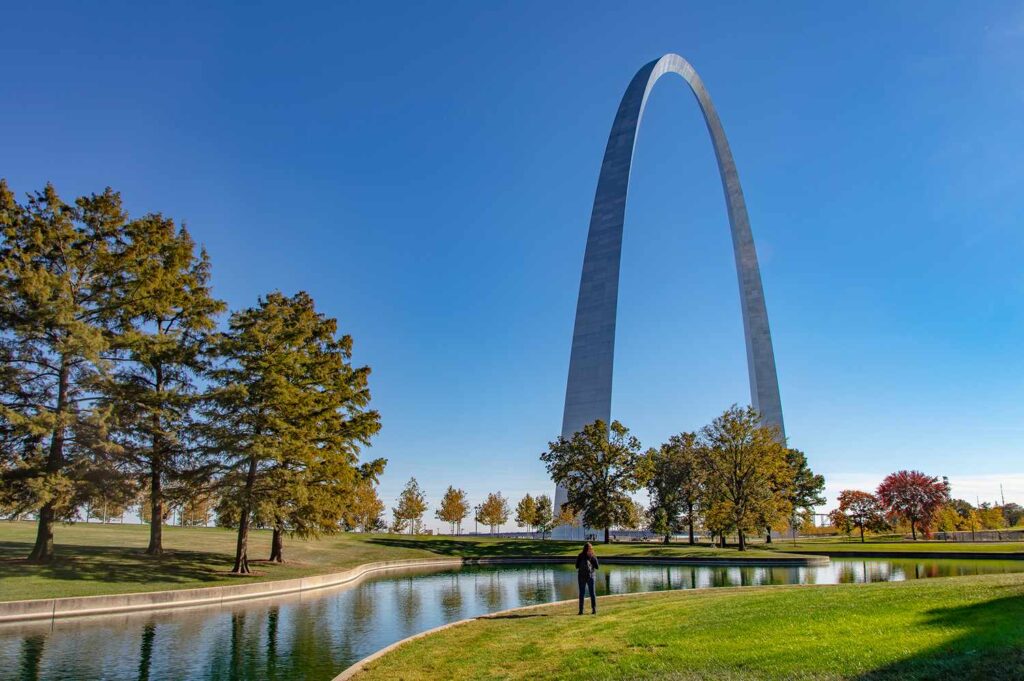The paradox with travel is that the most interesting or worthy things to do are often the most popular, leading to overcrowding. And in the world of national parks, this tension is amplified by factors like location, accessibility, and sheer size.
Take Wrangell-St. Elias National Park & Preserve in Alaska, which sprawls 13.2 million acres and is around 3.5 hours by car from Anchorage. Here, overcrowding is nearly impossible. Contrast that with Gateway Arch National Park in St. Louis, Missouri, which includes just 91 acres and is nestled in the heart of a major city.
That contrast helps explain why Gateway Arch was recently named the busiest national park in the world. According to a study by South African tour operator Go2Africa, which analyzed visitor numbers relative to park size, Gateway Arch sees nearly 7 million visitors per square kilometer each year. (With 2.56 million annual visitors and just 0.37 square kilometers of space, the math checks out.)
The results of the study illustrate the popularity and size of Gateway Arch National Park, but it’s important to remember that Gateway Arch isn’t a typical U.S. national park. Rather than acting as a wildlife or nature sanctuary, it was established to offer panoramic views of the surrounding city and to share the history of St. Louis. In that sense, it has more in common with the Empire State Building than with Yellowstone or the Grand Canyon.
That said, the figures are true; the Gateway Arch website notes that during the summer season, the tram to the top of the arch makes as many as 80 trips a day, sharing that “6,400 people can visit the top each day.” Going to the top of the arch, which tops out at 630 feet, may be the highlight of a visit to Gateway Arch, but there’s also a museum under the arch and gardens and ponds at its base.
To see this wonder, without overwhelming crowds, there are a few strategies. The park is noticeably quieter in the winter, running just 48 trips to the top (rather than summer’s 80 trips), and is less crowded on weekdays and early in the morning—trips up the arch start shortly after 9 a.m. daily. And while same-day tickets are available, tram tickets can sell out (especially during the summer), so it is recommended that you buy tickets and reserve the day and time of your visit in advance at gatewayarch.com.
The trip to the top of the arch takes 45 to 60 minutes and includes 10 minutes at the top of the arch. Ticket prices are $15 to $19 for adults and $11 to $15 for kids ages 3 to 15. The price varies based on the day and time of your visit.
Following Gateway Arch National Park on the list of Go2Africa’s most busy national parks was Zhangjiajie National Forest Park in China, which is famous for being the real-life inspiration for the Hallelujah Mountains in the movie Avatar, and Hot Springs National Park in Arkansas, which has just 5,550 acres but saw almost 2.5 million visitors in 2024.
The full list of busiest national parks, can be reviewed at go2africa.com.


